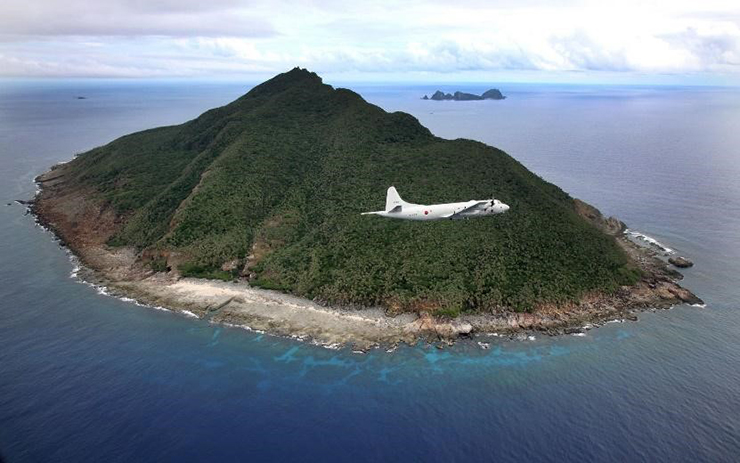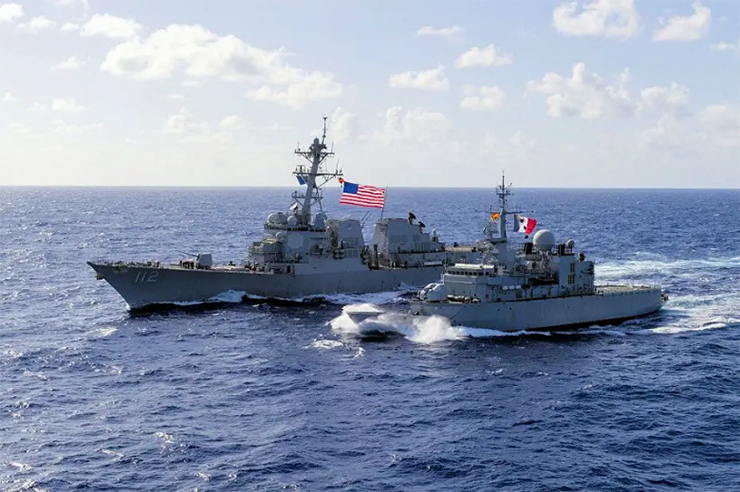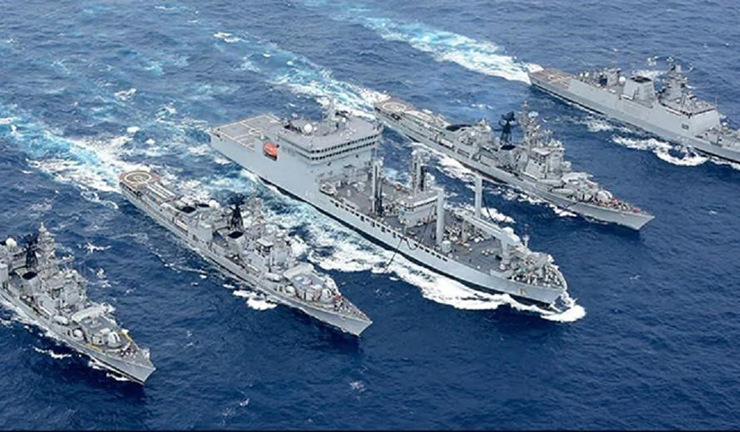
Regional Complexity: In 2018, the United States realigned its focus back to the emerging Chinese threats in Asia and rechristened the region as Indo-Pacific. The name change was purposeful to indicate a seamless connection between the Indian and Pacific Oceans in the context of security in the region. It also better represented resources that the US considered essential for its continued domination of this complex region. The terminology was immediately welcomed by US allies and partners while getting an expected retort from China and Russia.
China saw the move singularly targeted at it, in a commentary carried by Global Times in December 2020 it was suggested that the change of name is a US strategy to draw in India to counter China’s rise as the ‘centre of power’ in Asia. Russia refused the new proclamation choosing to abide by its own definition of the region as Asia-Pacific. It only amplifies how complex regional geopolitics has become, Chinese assertiveness and its abject disregard for historical facts have only made the matters worse. Countries after countries who till the last decade and a half were converging on China as the most preferred formula for economic revival are now standing grudgingly against it over issues of national sovereignty.
China considered the rechristening of the region as Indo-Pacific as a move singularly targeted at it. A commentary run by Global Times in December 2020 suggested that the change of name is a strategy of the United States to draw in India to counter China’s rise as the ‘centre of power’ in Asia
India’s own security outlook, which traditionally has focused upon the security of the Indian Ocean and Arabian Sea as its prime domain, was also faced with new challenges in the East and Western Pacific. Emerging maritime threats were raising newer concerns, and movement in its Eastern corridor was getting restricted by the day, as China made wayward and fanciful claims at alarming regularity. Indian foray with Vietnam oil exploration was objected to by China on dubious claims over EEZ. Indian Naval ship was intercepted in high sea by Chinese patrol crafts on its way to Vietnam for a port call in 2011. One thing India quickly realised was that it was a clear attempt to squeeze the operational space by the Chinese in its neighbourhood.

Worsening Situation
The worsening of the security situation was very well acknowledged across the region. China continued its adventures in the South and East China Sea and was setting a clear pattern with a deep message. It wished to become an undisputed power in what it considers its sphere of influence. China pressured its immediate neighbours Malaysia, Indonesia, Vietnam and the Philippines to forego their historical claims, the only way forward as per Chinese interpretations was agreeing on Chinese terms. China also backed its messaging with menacing naval power, especially in the South China Sea. In the last one decade, China has picked more territorial and maritime fights than in its entire history of existence. It disputes Japanese claims over the Senkaku islands; it has territorial disputes with Bhutan, Nepal and India; apart from its claims on entire Taiwan. Currently, China has territorial and maritime disputes with half of its 20 neighbours and historically it has seldom been friendly to any of them!
The Indian Navy is one of the region’s most powerful navies. It carries vast operational experience and fully understands Chinese tantrums. The Indian Navy seems to be redrawing its strategies. India has its plans ready to build a true Blue Water Navy by 2050 with more than 200 vessels and 500 aircraft
China seems to pursue a three-pronged approach towards its security – dissuasion of the US and its allies from coming closer to its stated territorial claims; maintaining adequate military pressure closer to the Taiwan Strait to back its routine threats, and ensuring strong power projection beyond its maritime boundary. PLA Navy, which carries the bulk of this responsibility, has been growing with an impressive array of strategic assets and has migrated from Green Water to a Blue Water Navy. It constitutes almost 350 surface ships and submarines and has become the second-largest naval force after the US.
As China pursued an expansionist approach it had shaken the delicate security balance in the region. Each of the Chinese confrontations underlined its growing ambitions garbed within bloated security concerns. However, the issues of national security are always relative to the perceived environment and work equally for the parties involved. In China’s case, this theory has taken a humongous shape. The list of perceived enemies for China has only grown and surely it would know that each of those countries would also see China no differently. China can continue claiming that its actions are guided by its ‘national security concerns’, and the same theory will hold good for all its professed enemies. China can take full credit for initiating this complimentary chaos.

Redrawing Strategies
Not surprisingly, Chinese actions attracted the attention of global powers as well, it took them some time to fathom the Chinese agenda, but it did sink in. While China chose to exploit vulnerable neighbours with its raw might, the US played smarter and militarised the whole of China’s neighbourhood, partnered with all its disgruntled neighbours and scaled up its military manoeuvres. All for ensuring globally accepted ‘rules-based order’ and ‘freedom of navigation’ is maintained. Surely Chinese are intelligent, they should reflect upon the situation, the US and the world’s most notable military alliance NATO are already standing next door. Flagship carriers of the UK, France, Canada and Germany, all major NATO powers, patrolling the area to ensure ‘freedom of navigation’. The regional security assessment suggests that probably the Chinese have been tricked into underestimating the counter response and got comforted by the physical absence of a NATO flag!
The Indian Navy is one of the region’s most powerful navies. It carries vast operational experience and fully understands Chinese tantrums. In recent years the Indian Navy seems to be redrawing its strategies towards better control of waters around the East extending to the Pacific and maintaining its dominant presence in the West. It’s working to augment India’s flank with a third indigenous aircraft carrier. As of now, multiple destroyers, frigates, corvettes, and conventional-powered and nuclear-powered submarines totalling around 45 are being indigenously developed. India has its plans ready to build a true Blue Water Navy by 2050 with more than 200 vessels and 500 aircraft.

Preferred & Equal Partner
The Indian Navy will likely have to work on multiple footings simultaneously. It needs to enhance its visibility and reach towards the East while further augmenting capabilities in the West. Acquisitions of new capabilities will be crucial, while the Navy has achieved substantial indigenisation it must also continue to pitch for high-end foreign acquisitions. These assets would be tools for strategic autonomy and power projection. The security environment has undergone a sea change in the last one decade and the Indian Navy should look to redefine its role as a security fulcrum for the Indo-Pacific.
The Indian Navy will have to work on multiple footings simultaneously. It’s time for the Indian Navy to be seen as a viable force backed with capacity and resolve. It will enable India to become a “preferred & equal partner” in major multilateral security arrangements and strongly propagate India’s global vision
India has been working actively with friends and partners in stabilising the security dynamics and new supply chains. This can only be possible if maritime routes remain safe and secure. The Indian Navy must explore opportunities to further integrate with other like-minded regional and global powers operating in the region. Coordination for training and operation would considerably ease the burden of assets and improve upon surveillance, communication, logistics and domination a key factor for operational success. It’s time that the Indian Navy must demonstratively be seen to be a viable force backed with capacity and resolve. It will enable India to become a “preferred & equal partner” in major multilateral security arrangements and strongly propagate India’s global vision!
–The writer has varied experience in security paradigm and is a keen follower of international geopolitics. He is also the author of popular blog site (geostrat.in) on geo-strategic affairs. The views expressed are personal and do not necessarily reflect the views of Raksha Anirveda








